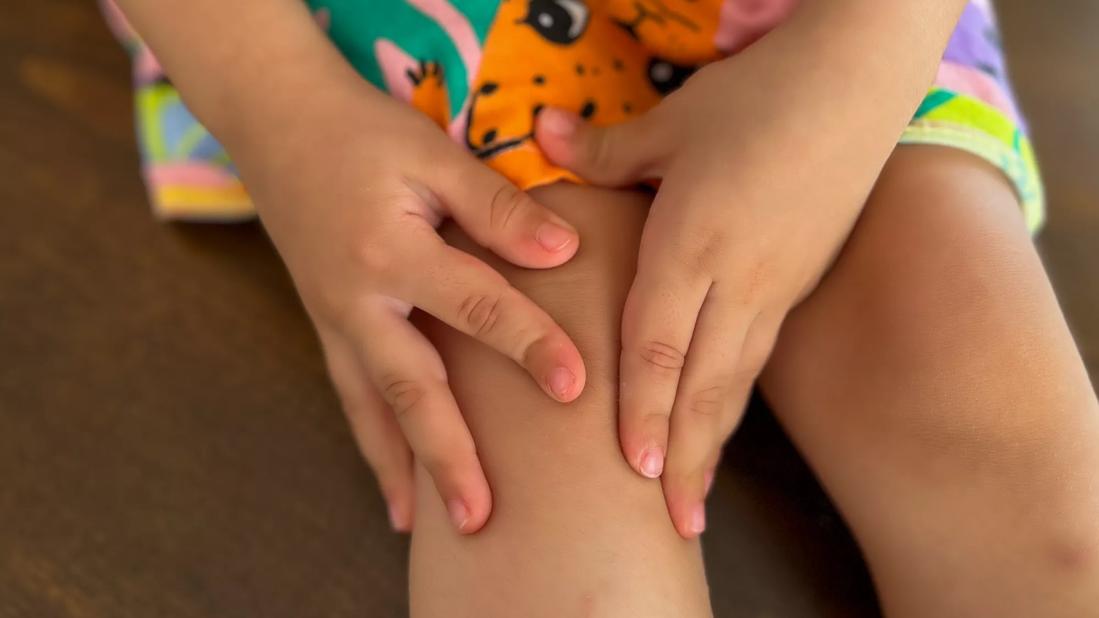Multiple comorbidities are associated with pediatric psoriasis

Psoriasis is the second most common chronic pediatric skin disorder, affecting around 1% of children, according to Laura Nedorezov, MD, a pediatric rheumatologist at Cleveland Clinic.
Advertisement
Cleveland Clinic is a non-profit academic medical center. Advertising on our site helps support our mission. We do not endorse non-Cleveland Clinic products or services. Policy
“Usually, the first thing that comes to mind when we think about the effects of psoriasis outside of the skin is juvenile psoriatic arthritis, which has a prevalence somewhere between 1% and 10%, though that number is somewhat uncertain,” Dr. Nedorezov says.
However, she says recent research has found that, beyond joint disease, children with psoriasis have a greater prevalence of risk factors for metabolic and cardiovascular issues such as obesity, hypertension, hyperlipidemia, diabetes and metabolic syndrome.
“Not only that, but kids with psoriasis have around a 20% to 30% higher risk of developing psychiatric disorders such as depression and anxiety than children who don’t have psoriasis,” Dr. Nedorezov says. She believes all these factors make it crucial for pediatricians to understand that psoriasis is not just a skin disease — it can affect children in multiple other ways as well.
Unlike adults with psoriasis, who typically develop joint involvement after the onset of skin disease, an estimated 50% of children develop psoriatic arthritis first without any skin involvement until months, or even years, later. The diagnosis is then made based off how the arthritis presents, if there are certain nail changes on exam, or if there is a family history of psoriasis in a first degree relative. The other half of children have both skin and joint involvement from the start or have psoriasis first and then eventually develop psoriatic arthritis.
“There can be a very heterogeneous and mixed presentation that we see amongst kids with psoriasis and psoriatic arthritis, and that makes it all the trickier to catch, diagnose and treat,” says Dr. Nedorezov.
Advertisement
Dr. Nedorezov says it may be difficult for pediatricians to recognize psoriasis because it’s often mistaken for conditions such as eczema or a fungal infection.
Typically, psoriasis is a red, scaly rash that can look like plaques, but sometimes, it develops in smaller pinpoint lesions. “In kids, it’s often thinner and a little bit smaller, so it can be a little bit more difficult to diagnose,” Dr. Nedorezov says.
She says other clues that a rash may be psoriasis include:
Diagnosing psoriatic arthritis is even more complicated, especially because it’s often not painful. “It’s really more stiffness,” says Dr. Nedorezov. Many kids find that their discomfort and stiffness get better rather than worse with physical activity, which can be an indication of psoriatic arthritis.
While joint swelling is an obvious sign of arthritis, sometimes parents don’t notice it or think about bringing it up to their pediatrician. “Kids are so resilient and often very active and not really complaining much, so it can be hard to tease these things out,” Dr. Nedorezov says.
She has found that kids with psoriatic arthritis typically present in one of two groups. The first is children around two to three years old who present with only a few joints involved, such as a swollen knee or dactylitis.
Advertisement
The second is kids between nine and 12 years old who present with inflammation where the tendons connect to the bones, as well as more hip or spinal involvement. “Because psoriatic arthritis can present in so many different ways, it is a challenging diagnosis to make,” says Dr. Nedorezov.
If pediatricians suspect psoriatic arthritis, Dr. Nedorezov says these patients should be referred to a rheumatologist. Also, “if there are any concerns for a rash plus joint involvement, then we in rheumatology are happy to help facilitate teasing things out to see if we’re dealing with psoriatic arthritis versus something else or two separate related processes,” she says.
As for concerns about psoriasis, she says if pediatricians feel comfortable, they can diagnose and treat it themselves, particularly if it’s a mild case with less than 10% of body surface area involved. These cases are usually treated with topical treatments initially anyway, which pediatricians can easily manage.
“If the child is still having persistent skin lesions or recurrence of the rash, they should be seen by dermatology as opposed to rheumatology,” says Dr. Nedorezov. She says pediatricians often refer patients with strange rashes to rheumatology, believing they’re autoimmune-related, but if the rash is diagnosed as psoriasis, patients are referred to dermatology. “They’re the skin experts,” she notes.
Recently, Dr. Nedorezov spearheaded a collaboration with her pediatric dermatology colleagues. “Any patient that has been diagnosed with psoriasis and is seeing dermatology is then referred to me for an evaluation from the rheumatology side, even if they’re not necessarily having any sort of joint complaints,” she explains.
Advertisement
Because there is currently no validated screening measure for psoriatic arthritis in children, Dr. Nedorezov’s purpose is to delve into potential joint symptoms. “Because it’s so difficult to diagnose, having rheumatology looped in sooner rather than later, even if the child is not really having any joint symptoms, is very important to catch them early on,” she says.
Dr. Nedorezov also explores other symptoms patients may be having due to psoriasis comorbidities or mental health issues. She gives them a thorough joint exam, as well as a baseline musculoskeletal ultrasound, which she does at the clinic bedside. In the ultrasound, she looks for inflammation in the joints or tendons that may not be evident on physical exam to see if there are subclinical abnormalities that need to be monitored more closely.
“It’s a very comprehensive approach in terms of educating the families on psoriatic arthritis, as well as talking about some of the other comorbidities and what to watch out for,” says Dr. Nedorezov.
Dr. Nedorezov wants pediatricians to be aware of the comorbidities associated with psoriasis so they can follow these patients more closely or refer them to resources that will optimize their health. “There are so many other aspects involved with psoriasis, and the primary care provider is the one who sees the child regularly and can check for these issues,” she says.
On the mental health side, many kids with psoriasis are bullied, which can cause them to feel ashamed and isolated and create stress for them and their families. “Working with their healthcare provider is even more important for getting a diagnosis and figuring out the right treatments to help minimize this burden on families,” says Dr. Nedorezov.
Advertisement
She refers all her patients to the National Psoriasis Foundation, which has many great resources for children living with psoriasis and psoriatic arthritis. Along with articles, webinars and podcasts, they have a peer-to-peer support network to connect families in similar situations.
Dr. Nedorezov also recommends camps for kids with skin diseases or arthritis. “It’s a really nice way for our patients to see that they aren’t alone in their condition and to feel like normal kids again,” she says. “Even though this is a serious disease, there is a lot out there to provide resources and support.”
Advertisement

Husni Lab focuses on transforming management and treatment

E-coaching program is tailored for those with the disease

Unraveling the TNFA receptor 2/dendritic cell axis

Nasal bridge inflammation, ear swelling and neck stiffness narrow the differential diagnosis

Genetic testing at Cleveland Clinic provided patient with an updated diagnosis

From dryness to diagnosis

Untreated seropositive erosive RA led to peripheral ulcerative keratitis

New clinic meets Hispanic patients where they are